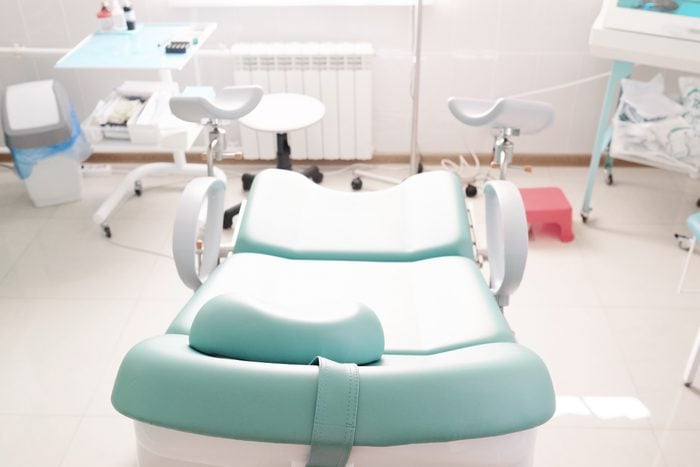
Vaginal Rejuvenation 101
The decision to have a cosmetic gynecological procedure done isn’t something a lot of women feel comfortable discussing. “Women don’t talk about it,” says Kristen Jones, 34, who has recently undergone a vaginal rejuvenation procedure. “There’s this secrecy about it,” says Jones.
“Vaginal rejuvenation can mean different things, depending on what women are looking for and what different physicians offer,” says Dr. Dean Elterman, a Toronto-based urologist.
In the past, similar procedures were done in the operating room. Women would have to be put under anesthesia and then the vaginal canal would be tightened up with stitches or sutures.
Nowadays, two non-invasive vaginal rejuvenation procedures are done using laser-therapy.
Before you jump to any conclusions, know the facts. Here, we’ve busted 4 common myths about laser-therapy vaginal rejuvenation procedures.

1) Myth: It’s All For Her Partner’s Pleasure
Truth: “It’s about the patient’s own sexual pleasure,” says Dr. Elterman.
Typically, patients ages 50 and up use a laser-therapy vaginal rejuvenation procedure called “Intimalase” as a way to fix the pain, dryness and elasticity issues that are associated with menopause and are a part of a woman’s natural aging process. The procedure enhances a woman’s vaginal muscle tone and increase sensitivity and sexual satisfaction.
Sexual satisfaction isn’t the only reason why women opt for vaginal rejuvenation procedures. Another laser therapy based procedure called “Incontilase” is designed for women with incontinence issues. In this procedure, the vaginal canal is tightened and shrunk in order to provide greater support to the bladder.
“Some women come in with a primary complaint (like bladder leakage) and find that the procedure treats another issue they were experiencing, such as laxity,” Elterman says.
Both “Incontilase” and “Intamalase” have more than a 90 percent satisfaction rate.

2) Myth: It’s Going to Hurt. A lot.
Truth: It’s pain-free.
Thanks to the use of laser therapy, a vaginal rejuvenation procedure is virtually pain-free. “No numbing or anesthetic is required,” says Dr. Elterman.
Vaginal rejuvenation procedures are done in a medical building with the presence of a doctor and two nurses. A very tiny speculum is then inserted into the vagina, which is followed by the light of the laser. Women may feel some heat when the laser is close to the opening of the vagina, but patients say that the discomfort is manageable.

3) Myth: Recovery Is Going to Be Killer.
Truth: The recovery is almost as simple as the procedure.
In order for the tissue to heal, women must abstain from intercourse for two weeks and shouldn’t wear tampons or avoid any heavy lifting for a month. Doctors sometimes prescribe a topical estrogen cream to help stimulate the body’s natural collagen to grow.
Since vaginal rejuvenation procedures are finished in less than half an hour, many women can even get the vaginal rejuvenation procedure done during their lunch break, says Dr. Elterman. “Within the hour, you’re back at your desk. There is virtually no recovery process,” he says.

4) Myth: It’s Not Necessary
Truth: While vaginal rejuvenation isn’t a life-saving procedure, it can greatly improve quality of life.
Jones has been experiencing severe bladder leaks ever since she had an extremely difficult forceps delivery and episiotomy with her firstborn.
When she was still in the hospital after giving birth, Jones says that she had no sensation in her bladder. “I would stand up and my bladder would completely let go,” she recalls. “I had no idea my bladder was even full.”
Two weeks later, she was referred to a physiotherapist for her bladder leaks. With the help of physiotherapy, Jones said her stress incontinence issues improved. “I couldn’t run, jump or sneeze, but it became manageable,” Jones said.
After five years of physiotherapy and a second pregnancy, her doctors said that she wouldn’t see any more improvement. At this point, Jones was still experiencing severe incontinence. Simple tasks like picking up her kids or crouching down in her classroom would result in leakage.Not wanting to wait 15 years before she was eligible for a bladder mesh sling operation, Jones’ decided to undergo an “Incontilase” laser therapy procedure, which shrinks and tightens vaginal tissue so that it can better support the bladder.
The procedure itself was really easy, says Jones. “I felt some heat during the procedure, but it was very manageable.” After undergoing two of the laser therapy sessions, Jones considers the procedure a success. “Now I can run, sneeze and have a full bladder without worrying about an accident.”
Recommended:
